 Royal Navy – Escort Aircraft Carriers (1942-43)
Royal Navy – Escort Aircraft Carriers (1942-43)HMS Avenger, Biter, Dasher, Charger (recom. USN as CVE-30)

Avenger class escort aircraft carriers: It was made up of three ships, based on the US built standard C3 hulls, the same as for HMS Archer, and thus built in the US and prvovided under lend-lease, the first of a long serie following HMS Archer. Their specifications and arrangements were different between them. The three ships of this class were HMS Avenger, HMS Dasher, HMS Bitter. The fourth, named Archer was impressed in the USN instead as USS Archer. They had a considerable light AA artillery, single centerline lift, fairly large hangar, a small island, and large ammunition reserves. Their air group was composed of Sea Hurricanes and Swordfish, frequently deployed despite bad weather on the Northern route to Murmansk. “stringbags” were tasked of U-boat spotting and attacks whereas Sea Hurricanes were here to intercept German bombers and seaplanes from Norway. HMS Avenger was torpedoed in November 1942 by U 155. HMS Dasher exploded in March 1943 during a routine operation, in a US team unfamiliar with British security procedures and communication breakup. HMS Biter survived and was sold to France postwar. As Dixmude, she operated in Indochina until disarmed in 1960. #ww2 #royalnavy #aircraftcarrier #escortcarrier #hmsavenger #hmsdasher #hmsbiter #seahurricane #faireyswordfish #musmansk #lendlease
Development
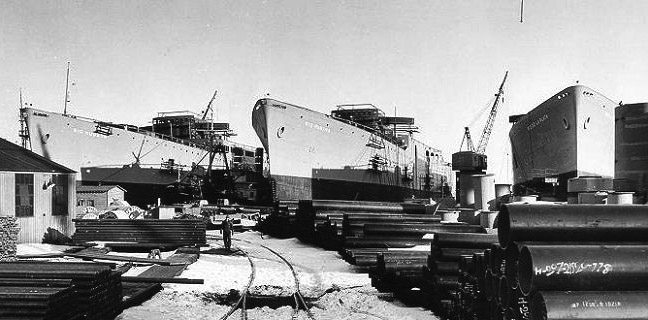
Rio Hudson (later HMS Avenger), Rio Parana (later HMS Biter), Rio de la Plata (HMS Charger) at Sun Shipbuilding & Drydock Company in Chester, Pennsylvania.
The Avenger-class escort carrier were originally covilian vessel built in the the United States Navy and their class was called the “Charger Type 1942 class escort carrier”. They were originally type C3 merchant ships built at Sun Shipbuilding Co.laid down in 1939-1940, launched, delivered practically complete before was taken to convert them for the the Royal Navy by 1942 under Lend-Lease agreement. She wa sconverted from sister ships of the “Rio” class (RIO HUDSON, RIO PARANA, RIO DE LA PLATA, RIO DE JANEIRO) ordered to Sun Shipbuilding & Dry Dock Co. for Moore-McCormack Lines and the South American routes. They displaced 17,500 tons for a draft of 27 feet 4 inches and were mixed vessel (transport/passengers) with a large central islands, 196 passengers, and 440,000 bales of cubic feet cargo space including 10% for refrigerated cargo. RIO HUDSON was launched on November 27, 1940, and completed while being purchased by the US Navy for a converison to the recent Long Island class “Auxiliary Aircraft Carrier” (1940). RIO HUDSON was requisitioned on May 20th, 1941 while her fitting was 80% complete (as shown pn the photo above) when delivered to the US Navy on July 31st 1941 for a conversion at Bethlehem Steel Corp. in Staten Island (New York).
The conversion consisted of having a lightweight wooden flight deck installed on a truss work superstructure over 70% of the deck and a a small enclosed hangar installed aft of the flight deck, served by a single lift. There was no catapult, only four arrestor cables. HMS Avenger was singular compared to her sister as she had no island superstructure but a small navigation bridge at the forward edge of her flight deck while. The true bridge was located under the flight deck and had wings either beam for minimal visibility. The conversion was complete by March 1st 1942, thus after eight months, far more than the six planned. She was transferred to the Admiralty, commissioned as HMS AVENGER (D14) on March 2nd.
Rio De Jaineiro was also requisitioned by the USN for conversion on the same dau, May 20, delivered 80% completed to Tietjen and Lang Dry Dock Co. shipyard in Hoboken NJ, and like HMS BITER and unlike Avenger, she was completed with a small island superstructure. Conversion also started in July 1941 and included the installation of Asdic gear, radar but also alterations to her main engines. As HMS DASHER (D37) she was first commanded by (ret.) VADM R. B. Davies, overseeing her completion and sea trials.
RIO PARANA (launched December 18th 1940), was scheduled for completion in August 1941 when requisitioned on May 20, 80% complete, and sent to Atlantic Basin Iron Works, Brooklyn (New York) for conversion under the same design as her sister Dasher when delivered to the yard on September 2, 1941. She was completed on May 1st 1942 as BAVG-3 (acronym for British Escort Carrier) before being renamed. Captain Abel-Smith watched over her completion, fixes and sea trials.
HMS Charger (ex-BAVG4, ex-Rio de la Plata was to be D27, also from Sun SB, Chester, USA in Newport News initially, and completed (converted) the first on 2.10.1941, two days later she entered service with the USN and thus are excluded from this post. For more, see the Long island class. She was the prototype for better escort carriers, and both Dasher and Biter converted along her design after USS Long Island proved diappointing.
Design of the class
Hull and general design
HMS Avenger was really identical in hull design as her two sisters, at 492.25 feet (150.04 m) long for a beam of 66.25 feet (20.19 m), height of 23.25 ft (7.09 m) ensuring good stability and seakeeping. She displaced 8,200 long tons (8,332 t) normal, 9,000 long tons (9,144 t) deep load. Other than that, their caracteristics had already been explored in depht with the USS Charger, see the Long Island class for more. The initial Avenger’s final design was closer to USS Long Island, without island and with a rather small hangar. The two others, Dasher and Biter, were clones of USS Charger, with an island and much larger hangar. All three had a crew (nominal) of 555 men, includong the regular ship’s crew, AA gunners, staff, air crew and aviation maintenance teams.
Plans of Dixmude, ex-Biter.
About Sun Shibuiding & Co
Sun Shipbuilding & Dry Dock Company (“Sun Ship”) was initialy created by Sun Oil in 1917 as tanker builder for US WWI needs, and remained in continuous operation during the interwar years. By 1939, MARCOM’s need for more ship urged her extension: She had 8 ways for shipbuilding, and this was increased to 20 under a budget of $28mm from the USMC which needed oilers for the Pacific, and later to 28 slipways, becoming the largest US shipyard, with 40,000 people in 1943, spread between four adjacent yards #1 t #4, the remainder exclusively served by African-American workers.
Sold to Pennsylvania Shipbuilding (Penn Ship) in 1982 it closed in 1989. North Yard became the Penn Terminals for independent cargo and only U.S. port facility using Boilermaker labor.
Powerplant
Propulsion was inherited from civilian vessels which emphasised efficience (small engines), and range over speed, with four diesel engines connected to a shaft, and a total of 8,500 brake horsepower. Still the new design was not yet under recommendation from MARCOM with U-Boat speed in mind, but the company wanted reasonably fast ship, so they were capable of reaching 16.5 knots (30.6 km/h; 19.0 mph), which was equal to the surfaced speed of most U-Boats. These were Sun-Doxford Diesels. They were proper to Sun Shipbuilding constructions in Chester. Percy Jackson was a leading British engineer who helped designed the Doxford Oppose piston engines. The “P” type became their most successful model, followed by the J type and the Doxford Seahorse was the result of a joint venture with Hawthorn Leslie. 1. They carried in diesel oil up to 3,061 tonnes bunkerage, making for 15,000 nautical miles at 15 knots.
Armament
As completed these ships carried three 102mm or 4-inches /50 Mk 9 dual purpose main guns, two on sponsons either side of the orward bridge and one on the poop deck. They carried only light artillery on sponsons along the main deck, four twin 20mm/70 Oerlikon Mk 1.2, and seven single 20mm/70 Oerlikon Mk 1.2, as well as six single 12.7mm/90 Browning M1920 heavy machine guns.
Main
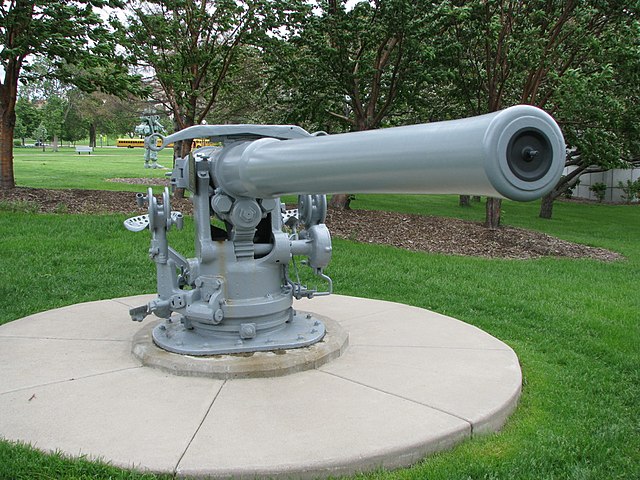
The The 4″/50-caliber gun was the standard low-angle, quick-firing gun created in 1898 and seeing first service with the monitor USS Arkansas and all “Flush Deck” destroyers during WWI up to the 1920s as well as a the standard deck gun for mass produced S-class submarines, alternative to the 3-inch (76 mm) gun up to WW2. I was produced mostly under the Mark 9 label by Midvale Steel, Bethlehem Steel, British and American Mfg. Co., Watervliet Arsenal, Root & VanDervoort, American Radiator Corp., Poole Engineering in 1911-1920 in very large numbers, 988. Many were still in stock and for ships with lower priority as the CVEs, perfect as main armament.
⚙ specifications CANNON |
|
| Weight | ,900 lb (2,700 kg) with breech |
| Lenght | 206.53 in (5,246 mm), barrel 200 in (5,080 mm) bore 50 calibres |
| Elevation/Traverse | -15° to +20°, 150°/150° either beam |
| Loading system | Locking ring and screw breech |
| Muzzle velocity | 2,900 ft/s (880 m/s) |
| Range | 15,920 yd (14,560 m) at 20° elevation |
| Guidance | Optical |
| Crew | 6 |
| Round | 62.4–64.75 lb (28.30–29.37 kg) complete, 15 kgs shell alone |
| Rate of Fire | 8-9 rounds per minute |
AA
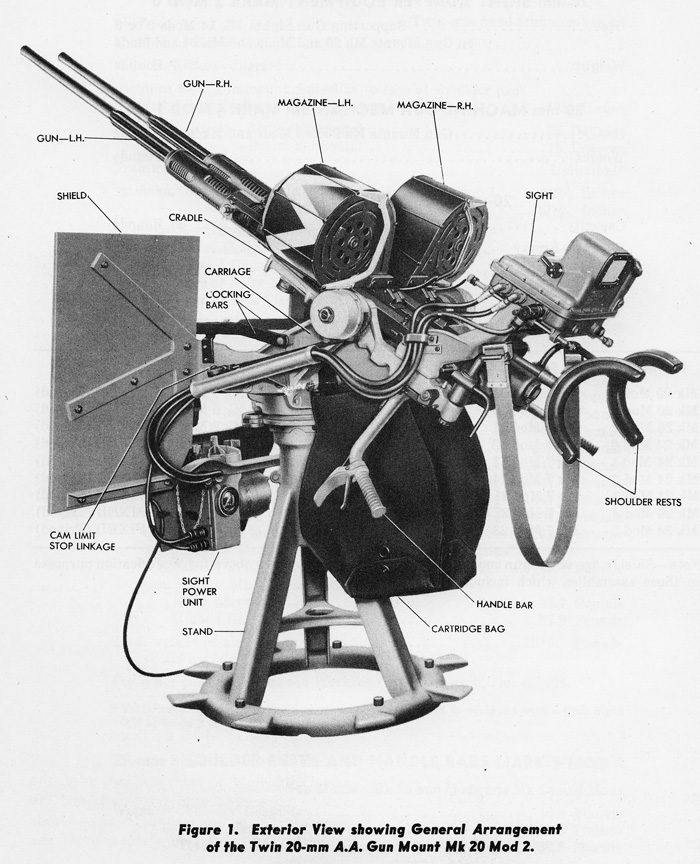
Twin Oerlikon mount. The subject had been treated in detail in the artillery section, here.
They were placed on five port side heavenly spaced sponsons, and five starboard, with for the latter, two close together due to the presence of the island. Some had twin mounts, nearly of the same size as the singles, and the rest of ten sponsons, so six, were single 70 caliber Oerlikon Mk 1.2. The seventh position is unclear, perhaps on the deck forward between the main guns. The location of the heavy machine guns is also unclear.
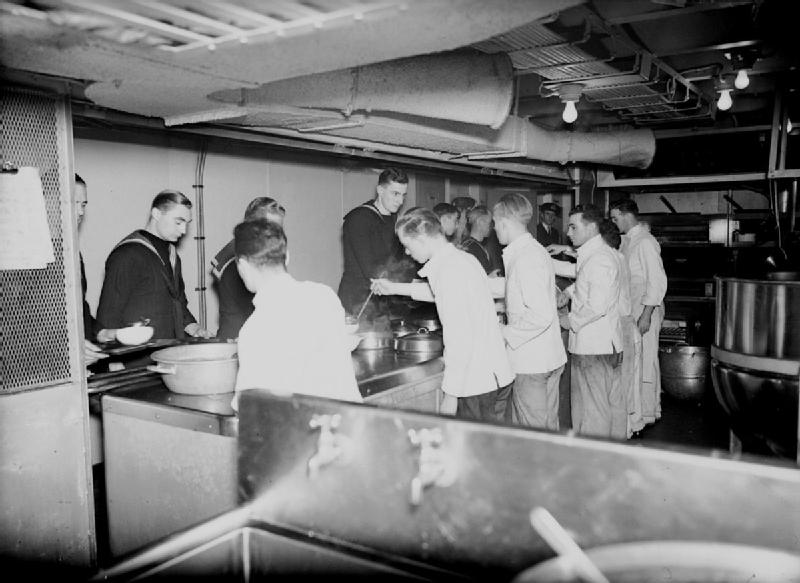
Cafeteria on board HMS Dasher
Sensors
The ships were completed with British radars back in Britain:
Type 79 radar: Early-warning radar: FRQ 43 MHz PRF 50/s, BmW 70°, Pwd 8-30 μs RA 30–50 mi (48–80 km) PP 70 kW.
Type 271 radar: Sea-surface search, early warning radar: FRQ 2950 ±50 MHz (S-band), PRF 500 pps Bmd 8.6ºH/85ºV, Pwt 1.5 μs, 2 rpm RA 1 to 11 NM (1.9–20.4 km) PP 70 kW
Aircraft Facilities & Air Group
Aircraft facilities comprised a small combined bridge with flight control open deck on the starboard side. The wooden-cladded 410 ft (120 m) long flight deck (later 134.7 m or 439 ft) was 23.7 meters wide (75 ft) for 2,963 (later 3,192) m² in surface or 32,000 (34,400 sq ft). The hangar was on Biter and Dasher c50% of the whole ship’s lenght, at 190 ft × 47 ft (58 m × 14 and 4.88m tall) or 1,275m² in surface (13,700 ft sq) and 6,222m³ or 219,700 cu ft in volume.
The single aft hangar measured 43 ft × 34 ft (13 m × 10 m) with a capacity of 5.4t. There was a single aircraft catapult H-II capable of launching a 3.2t plane at 113 km/h, and nine arrestor wires but no crash barrier. Aircraft fuel stowage was 341,000 liters, but after commissioning it was decreased to 164,000 liters avgas for safety reasons.
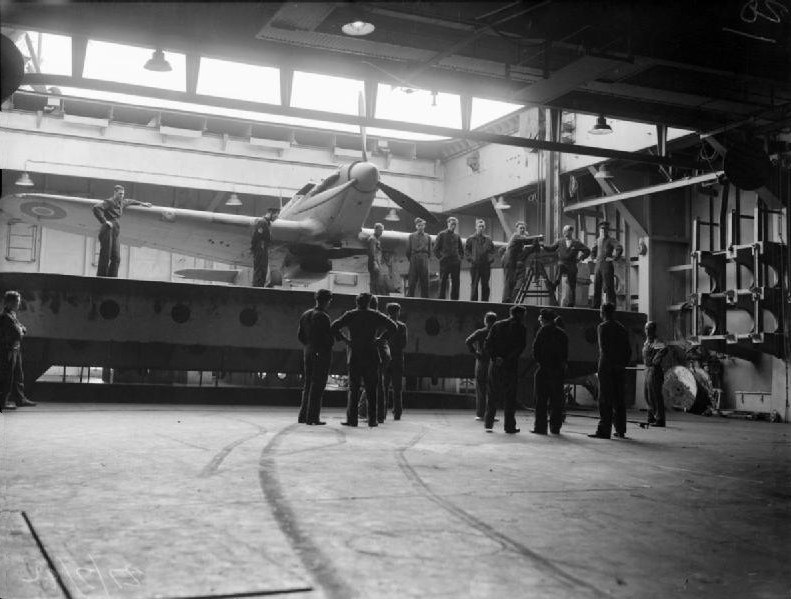
The hangar was large enough for fifteen aircraft, generally a mixture of Hawker Sea Hurricane fighters (later Grumman Martlet) and Fairey Swordfish or Grumman Avenger also later in their career. The last two were used for anti-submarine patrols. Other sources states they also operated the Fulmar, Seafire and even the Buffalo, but it needs photo confirmation.
HMS Biter at the end of her career in 1944 carried 4.1944 Biter 7 Wildcat and 11 Swordfish. It seems the beefy Avenger were rarely carried, ill-adapted for these small decks. Biter in 1943 carried 3 Wildcats, 9 Swordsfish, so it was mostly mission and area dependent.
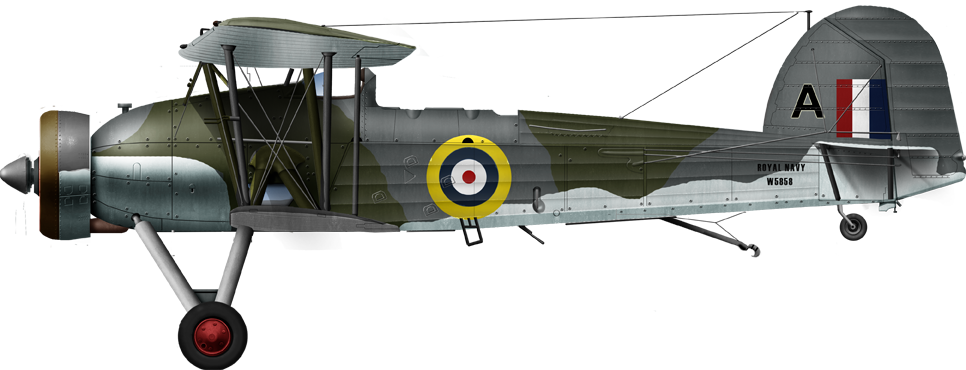
Fairey Swordfish Mark 2 from 837 NAS, HMS Dasher 1942
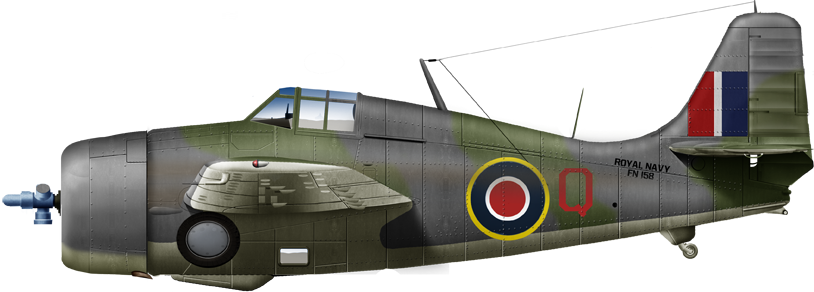
Martlet Mark VI on HMS Biter, 1944
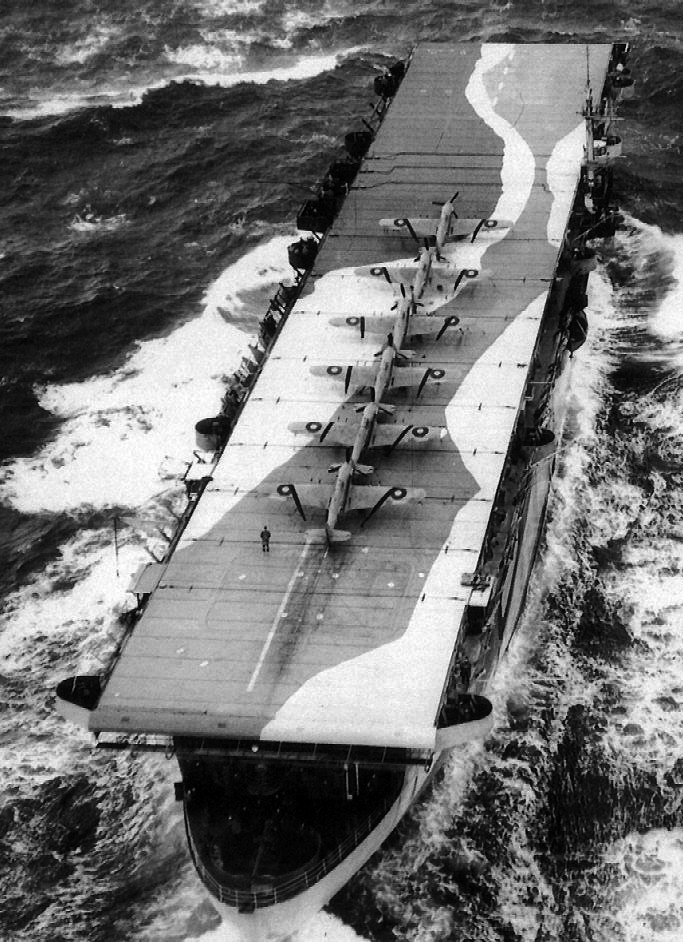
A nice alignment of strapped Sea Hurricanes on HMS Avenger, 1942. Note the camouflaged deck.

Author’s old rendition
⚙ specifications |
|
| Displacement | 8,200 long tons (8,332 t) normal, 9,000 long tons (9,144 t) deep load |
| Dimensions | 492.25 x 66.25 x 23.25ft (150.04 x 20.19 x 7.09 m) |
| Propulsion | 1 shaft, 4 diesels: 8,500 bhp (6,300 kW) |
| Speed | 16.5 knots (30.6 km/h; 19.0 mph) |
| Range | 3,061 tonnes oil, 15,000 nautical miles; 15 knots. |
| Armament | 3 × QF 4 in Mk XVI, 15 × Oerlikon 20 mm AA |
| Sensors | type 79, type 271 radars |
| Air Group | 15, see notes |
| Crew | 555 |
Career of the Avenger class
 HMS Avenger (D14)
HMS Avenger (D14)
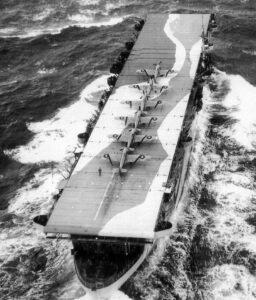 HMS Avenger was originally a C3-P&C from Sun Shipbuilding Laid down on 28 November 1939 as part of MARCOM plans to rapidly increase allied trade capacity. She was launched on 27 November 1940 but selected for conversion as escort carrier in 1941 and Commissioned as such on 2 March 1942. On 18 April she started flight deck landing training, with four Fairey Swordfishfrom 816 NAS FAA, until her engines broke down. After repaired on 30 April 1942, she was presed into convoy AT 15 to Britain. On 4 May, two Swordfishes lost sight of the convoy in heavy weather and requested a homing beacon, but she was unable to help (no equipment) and they disappared. The FAA wanted Martlet (Wildcats) for air cover and Sea Hurricanes, freshly converted, were obtained. Avenger was the lead ship to test their ability to operate from small decks, performed by legendary Eric “Winkle” Brown. Greenlighted, 802 NAS and 882 NAS (6 each) were assigned to Avenger, adding to the Swordfish from 825 NAS.
HMS Avenger was originally a C3-P&C from Sun Shipbuilding Laid down on 28 November 1939 as part of MARCOM plans to rapidly increase allied trade capacity. She was launched on 27 November 1940 but selected for conversion as escort carrier in 1941 and Commissioned as such on 2 March 1942. On 18 April she started flight deck landing training, with four Fairey Swordfishfrom 816 NAS FAA, until her engines broke down. After repaired on 30 April 1942, she was presed into convoy AT 15 to Britain. On 4 May, two Swordfishes lost sight of the convoy in heavy weather and requested a homing beacon, but she was unable to help (no equipment) and they disappared. The FAA wanted Martlet (Wildcats) for air cover and Sea Hurricanes, freshly converted, were obtained. Avenger was the lead ship to test their ability to operate from small decks, performed by legendary Eric “Winkle” Brown. Greenlighted, 802 NAS and 882 NAS (6 each) were assigned to Avenger, adding to the Swordfish from 825 NAS.
Next she was assigned to Convoy PQ 18 from 3 September 1942, and the carrier was commanded by ex-Swordfish pilot, now captain Anthony Paul Colthust, bound for Iceland. The weather was abysmal and one Sea Hurricanes even broke free from its restraints and went overboard. A Focke-Wulf 200 Condor spotted them and reported their position, so while in Iceland, HMS Avenger was bombed by another Condor, which missed but flattened two houses ashore. Meanwhile the RN gathered every ship available to escort the Arctic convoy, the largest force at the time under command of Rear-Admiral Robert Burnett. HMS Avenger was then the only escort carrier, escorted by AA cruiser HMS Scylla and 16 destroyers, plus many sloops, corvettes, and minelayers used also for escort. Avenger and Scylla departed Iceland after the convoy left, escorted by DDs HMS Wheatland and Wilton, and joined them on 9 September 1942. Bad weather prevented flying until 12 September. A Swordfish on patorl located a Blohm & Voss BV 138 shadowing the convoy. Four Hurricanes took off to intercept but the latter escaped. Later a Swordfish spotted two U-boats but they dived before escorts arrived. On the 13th a Swordfish spotted and attacked a surfaced U-boat before dawn and she escaped underwater. At 07:00 two U-boats were also spotted and they also dived. Later another BV 138 was sighted, Sea Hurricanes again took off and lost it in the clouds. At 09:00 two merchant ships were torpedoed and sunk. Sea Hurricanes managed to find a BV 138 but could just shot her down, their puny .303 cal. machine guns had little effect on the “flying clog”.
At 15:00 six Ju 88 circling the convoy mande an attack but missed. Sea Hurricanes engage them but they fled. This ws a diversion a mixed formation of 50 Ju 88 and Heinkel He 111 attacked with torpedoes. They met an anti-aircraft barrage that claimed five, disrupted the rest and from 96 torpedoes, only eight hit (small caliber torps, most hit ships survived). One 111 was also claimed by Sea Hurricanes called back. Later 9 He 115 torpedo bombers arrived at 16:15, one shot down by AA and the rest dropped their torpedoes too far, being evaded. Sea Hurricanes took off againt to intercept another BV 138 which again, resisted their fire and manage to shot down one Sea Hurricane. At 20:40, 12 He 111 attacked with torpedoes, half shot down by AA and Sea Hurricanes.
03:30, 14 September, an U-boat torpedoed and sank a tanker aft of the convoy, which tall mushroom of flames illuminated the whole convoy like god’s flare. A patrolling Swordfish spotted the surface U-Boat which made a crash dive at 04:00 and then another trailing them. Another Swordfish sighted U-589 at 09:40, she dived, until caught by sonar and sunk by HMS Onslow. Meanwhile HMS Avenger had to change tactics due to its shortage of Sea Hurricanes and Fairey Swordfish, using the full deck length to take off in permanent rotation, one trio inthe air, the other prepared at the end of the deck.
At least she could try to breakup German aircraft formations before they reach the AA barrage. At 12:30, no less than 22 Ju 88s and He 111s escorted this time by Bf 110s arrived, and all nine Sea Hurricanes were scrambled in interception, forcing the He 111 to drop their torpedoes early, turn away, the rest being dealt with by the anti-aircraft barrage. It was a coordinated attack as 14 Ju 88s attacked from the rear, and divided the Sea Hurricane squadrons. One Ju 88 was shot down. Still, 20 aircraft made their bombing run, one claimed by AA.
At 15:30, 25 He 111 arrived in front of the convoy, and no less than 17 this time went stright for HMS Avenger, which evaded all torpedoes. Three of Sea Hurricanes, which went too close were victims of blue on blue and shot down by AA. Pilots were rescued. More Ju 88s came later for HMS Avenger and Scylla, no hit but many near misses, one starting a small fire in the carrier’s catapult room, extinguished. Her Sea Hurricanes claimed five He-100, threeprobabl, 14 damaged. It was a very bad day for the Luftwaffe.
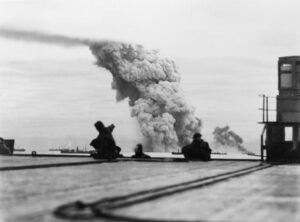 On 15 September fog appaeared in the night, cleared at 12:20, when Avenger’s radar reported 70 incoming bogeys. All Avenger’s six remaining Sea Hurricanes took off and they kept the bombers above the clouds, so their bombing was completly innaccurate. Fuel shortages forced them to leave. On the 16th at last a Consolidated Catalina from No. 210 Squadron RAF in Russia arrived. On Avenger all aicraft were collected in the hangar and the deck was cleared. With Scylla she left PQ 18 to join another convoy leaving Musmansk. Convoy PQ 18 which arrived in Archangel had ten of the 41 merchant ships sunk, hich was considered a success by the admiralty given the odds.
On 15 September fog appaeared in the night, cleared at 12:20, when Avenger’s radar reported 70 incoming bogeys. All Avenger’s six remaining Sea Hurricanes took off and they kept the bombers above the clouds, so their bombing was completly innaccurate. Fuel shortages forced them to leave. On the 16th at last a Consolidated Catalina from No. 210 Squadron RAF in Russia arrived. On Avenger all aicraft were collected in the hangar and the deck was cleared. With Scylla she left PQ 18 to join another convoy leaving Musmansk. Convoy PQ 18 which arrived in Archangel had ten of the 41 merchant ships sunk, hich was considered a success by the admiralty given the odds.
Next, Avenger escorted Convoy QP 14 at 05:00, 17 September. Swordfish patrols went on all day. Ice formed on the flight deck and no flight were possible on 18 September, the convoy headed away from Norway’s airfields but were spotted by a German recce plane. Sea Hurricanes stayed on board but Swordfish remained on patrol also on the 19th and 20th and still one merchant ship was torpedoed and sunk on the latter day. At 18:45 Avenger left the convoy with three destroyers for Scapa Flow. HMS Somali meanwhile in the convoy was torpedoed, and two days later a merchant ship. At port, Avenger’s captain Colthust submitted his report to underline the inadequacy of Sea Hurricanes’s armament and his small air crew. The Swordfish was too heavy to take off freely with depth charges.
At least, better Sea Hurricane were obtained, but no solution was found for the Swordfishes.
Operation Torch
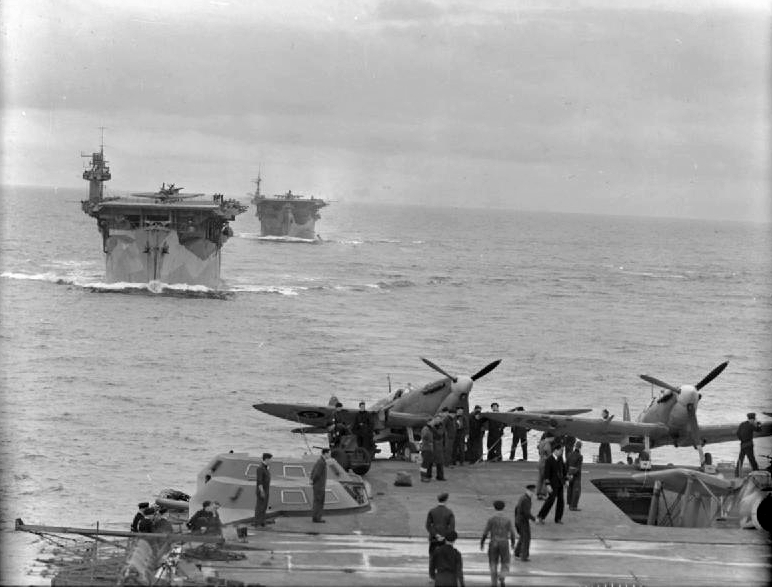
HMS Biter and Avenger seen from the deck of HMS Victorious, which has two Supermarine Seafires on board
HMS Avenger for this new mission this time was supported by HMS Biter and HMS Victorious. They left Scapa for Greenock assembly area on 16 October 1942 and she carried two resplenished Sea Hurricane squadrons of a new Mark, armed with 20 mm cannon. Avenger’s mission was air cover for a British convoy with the assault force to North Africa and theh she would join the landings and teal with HMS Argus. On 8 November 1942 her Sea Hurricane were seconded in CAP by Supermarine Seafires from Argus, flying 60 fighter missions. On 9 November the carrier was missed by a torpedo from an He 111 but she had engine problems and had to stop to Gibraltar however in between she was caught by U-155 (Kapitänleutnant Adolf Piening) which torpedoes and sank her. 516 went down on 15 November west of Gibraltar with apparentky a single hit. 12 were rescued.
 HMS Biter (D97)
HMS Biter (D97)
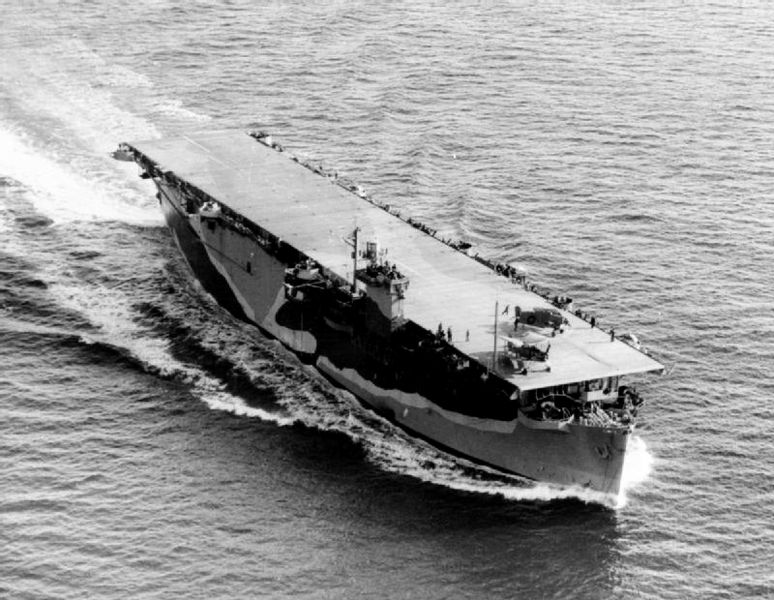
After commission, HMS Biter was about to leave New York when a fire broke out on 8 May 1942 in the catapult housing compartlent, its motors melted. After repairs she sailed out on 15 May buy returned to due her troublesome diesels. At sea she made her speed and gunnery trials on 30 May while receving her first Swordfish on 2 June, leading to flying trials and departure for Nova Scotia on the 12th and leaving 2 days later for Britain but engine problems leaving her adrift for three hours, until repairs. They did not stopped as she crossed the Atlantic and by 17 September a depth charge-armed Swordfish crashed into her island while landing.. The fire was extinguished after 75 minutes, and the remaining charged dumped overboard. She made it into Greenock on 23 June and while in dock had her wooden flight deck lenghtened. 2 September saw her in landing trials with Fairey Fulmar and other aircraft. She also practice refuelling at sea her escorts. On 1 October she was in Scapa Flow, and on 10 October met Avenger, her air group joined in on 14 October with 15 Sea Hurricane IBs from No. 800 NAS (armed with 12 .303 in MGs) but also ICs (four 20 mm cannons). They departed with HMS Victorious on 16 October for Dibraltar and Operation Torch.
There, she took part in the covering force off Oran ( Rodney, Argus, Dasher, Delhi, 9 destroyers). She started attacking Vichy French air assets on 8 November 1942, but lost a Sea Hurricane (which crashed into her bridge), another shot down by a Dewoitine D.520. Biter and Dasher returned to Gibraltar on 10 November and Biter joined a convoy for Greenock, arrived on the 19th and was overhauled in Dundee. February 1943 saw her joining Argus and destroyer escorts for ASW training and they departed for Iceland on 13 April with HMS Obdurate and Opportune, then HMS Pathfinder making the 5th Support Group (Captain Conolly Abel-Smith).
She received onboard NAS 811 (Lt.Cdr A.J.B Ford, 9 Swordfish, 9 Martlets). On 21 April she departed Iceland to escort convoy ONS 4 to Argentia. Captain Abel-Smith wanted his ship to keep distance in order to more easily spot and engage shadowing U-boats. Two Swordfish flew a serie of patrol around the clok and on 23 April, one sighted a surfaced U-boat, which dived. In the afternoon they spotted another, which reported the convoy and HMS Biter, a premium target. She was at the time 50 mi away from the convoy. But when another DCs armed Swordfish arrived U-191 already had been caught and sunk by HMS Hesperus. On 25 April, Biter’s radar operator had a U-Boat contact, surfaced. A destroyer found nothing bu at 16:25 one Biter’s Swordfish spotted U-203 some 8 mi (7.0 nmi; 13 km) from HMS Biter and dropped her two depth charges, while more Swordfish arrived, plus HMS Pathfinder. At 18:40 U-203 surfaced, abandoned and the convoy arrived at Argentia on 19 April.
Next HMS left Argentia on 5 May for convoy HX 237 with the 2nd Canadian Escort Group. Abel Smith was ordered by the admirakty to take place in the convoy this time, but fog prevented flight ops. But at 07:30 on 7 May, two Swordfish took off for ASW patrols and the idle, much faster Martlets joined in. However one lost the convoy, later ditched beside a straggling merchant ship for rescue.
Bad weather went on near the Western Approaches, and restarted oat 16:00 on 10 May. There was one sighting, two depth charges deopped bt fierce Flak hit the “strongbag” which managed to get back. A second arrived but could not located the U-boat, nor convoy when back, and ditched close to a straggling merchant ship for rescue. On 11 May, a Swordfish spotted and attacked another surfaced U-boat which dived. On the 12th, another Swordfish reported a U-boat but disappeared. Instead of flying in pairs, they were forbidden to attack surfaced U-Boats due to their FLAK, only when diving as the gun crews went down. The afternoon one U-Boat was spotted surfaced 6 mi (5.2 nmi; 9.7 km) from the convoy (U-89) later located and sunk by HMS Broadway (US-leased Town-class destroyer) and HMS Lagan (River-class frigate).
On 13 May, Coastal Command Liberators and Sunderlands started to cover the convoy, while two Swordfish which took off at dawn located two surfaced U-boats, signalled to a Sunderland from No.423 Sqn. RCAF and another single U-Boat at 09:00 which dived. The former two U-boats, U-456 and U-753 were sunk by HMS Opportune, a Liberator from No. 86 Sqn. and the flower class HMS Lagan and HMCS Drumheller. Next, Biter would escort HX 237 this time under cover for most of the distance by land-based aircraft. Western Approaches Command ordered Biter to sail 200 mi (170 nmi; 320 km) south to support the eastbound convoy SC 129. Intel warned of a gathering wolfpack. On 15 May, the Swordfish could not use the catapult and carried just two 40 lb (18 kg) bombs underwings. One attacked a surfaced U-boat, but return FLAK hit her and injured badly the observer. It later Dived. At 13:45, Biter started to join the convoy while launching ASW patorls. The convoy arrived on 16 May, no loss. In the Clyde for R&R, Biter had a new group of 15 bombers and six fighters and twice as much air crews for rolling patrols and homing beacons were installed in order for the airborne planes to find back the carrier. Asl the Type 237 blind approach beam system to land in poor visibility was installed.
On 19 October 1943, Biter sailed with 6 Swordfish, 6 Martlets (811 NAS), was ordered to join ON 207 which arrived at Argentia on 5 November. They departed on 7 November with convoy HX 265. Biter led the 5th Support Group (HMS Pathfinder, Opportune, Obdurate=) and operated with the 7th Escort Group. They were to sail some 60 mi (52 nmi; 97 km) ahead of the convoy (the other 120 miles) in order to detect large concentrations of U-boats ahead of their known routes. There were U-boat sightings but none sank, one reported damaged on 10 November. On the 16th a Swordfish crashed into the sea but its homing torpedo detached and detonated close to Biter’s rudder so she lost steering. Not altering course she reached Britain and stayed in dock for 4 weeks.
Biter saw little action afterwards. Her fate is uncertain. By 9 April 1945 the was ended in Europe and she was send back post-lease to the US. There, she entered San Francisco Yard for a refit and was lent to the French Navy, renamed Dixmude. The latter constituted Flotille 3FB with Douglas Dauntless. She headed for the far east, Indochina operated until 1949, and by 24 January 1951 she was stricken from US register, sold after her last refit of 1951–1953 to France, where she served as accommodation ship until 1965, returned to the US Navy (she stayed in the Med due to her poor state) and disposed of as target ship on June 16, 1966 in Exercise Deep 6.
 HMS Dasher (D37)
HMS Dasher (D37)
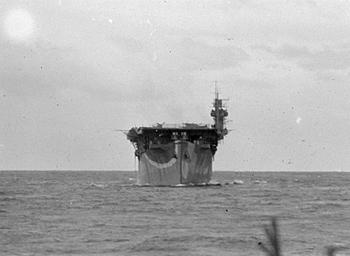 After transfer to the Royal Navy, HMS Dasher (D37) started eher career when commissioned on 2 July 1942. She was soon taking part in Operation Torch with Biter. On board were Sea Hurricanes from 804 NAS. After aircraft ferry duties she was in the Clyde by March 1943, had her deck lenghtened and she escorted another convoy successfully, and after the second, engine trouble started again. But in the Firth of Clyde, 27 March 1943, she had a major internal explosion and sank. Causes suggested like the igniting petrol fumes from leaking tanks or ordnance cooking were never cleared. But 379 out of 528 crew died. There was assistance and rescue craft like never before for such event. Many sailors which ended in the frezzing waters died of hypothermia or burns when leaking fuel ignited on the water. They were buried between Ardrossan and Greenock. Bad design of stowage and handling or poor RN petrol-handling procedures had points. The first effect was drastically reduce from 75,000–88,000 US gal down to 36,000 US gal (140,000 L) avgas on board CVEs. There was a cover up in local media. Furious relatives protested when many dead were never returned to their families for burial and survivors were put under strict secrecy ro preserve the nation’s morale. The wreck is now under Protection of Military Remains Act.
After transfer to the Royal Navy, HMS Dasher (D37) started eher career when commissioned on 2 July 1942. She was soon taking part in Operation Torch with Biter. On board were Sea Hurricanes from 804 NAS. After aircraft ferry duties she was in the Clyde by March 1943, had her deck lenghtened and she escorted another convoy successfully, and after the second, engine trouble started again. But in the Firth of Clyde, 27 March 1943, she had a major internal explosion and sank. Causes suggested like the igniting petrol fumes from leaking tanks or ordnance cooking were never cleared. But 379 out of 528 crew died. There was assistance and rescue craft like never before for such event. Many sailors which ended in the frezzing waters died of hypothermia or burns when leaking fuel ignited on the water. They were buried between Ardrossan and Greenock. Bad design of stowage and handling or poor RN petrol-handling procedures had points. The first effect was drastically reduce from 75,000–88,000 US gal down to 36,000 US gal (140,000 L) avgas on board CVEs. There was a cover up in local media. Furious relatives protested when many dead were never returned to their families for burial and survivors were put under strict secrecy ro preserve the nation’s morale. The wreck is now under Protection of Military Remains Act.
Read More/Src
Books
Cocker, Maurice (2008). Aircraft-Carrying Ships of the Royal Navy. Stroud, Gloucestershire: The History Press. ISBN 978-0-7524-4633-2.
Poolman, Kenneth (1972). Escort Carrier 1941–1945. London: Ian Allan. ISBN 0-7110-0273-8.
Syrett, David (1994). The Defeat of the German U-boats: The Battle of the Atlantic. Columbia, S.C: University of South Carolina Press. ISBN 978-0-87249-984-3.
Cocker, Maurice (2008). Aircraft-Carrying Ships of the Royal Navy. Stroud, Gloucestershire: The History Press. ISBN 978-0-7524-4633-2.
Poolman, Kenneth (1972). Escort Carrier 1941–1945. London: Ian Allan. ISBN 0-7110-0273-8.
Syrett, David (1994). The defeat of the German U-boats: the Battle of the Atlantic. Columbia, S.C: University of South Carolina Press. ISBN 978-0-87249-984-3.
Steele, John; Steele, Noreen (2010). The American Connection to the Sinking of HMS Dasher. North Shore Publishing. ISBN 978-0953263714.
Steele, John; Steele, Noreen (2002). The Secrets of HMS Dasher. Argyll Publishing. ISBN 978-1902831398.
Links
on shetlandtimes.co.uk
web.archive.org fleetairarmarchive.net/
navypedia.org/ brit_cv_avenger.htm
en.wikipedia.org
naval-encyclopedia.com british ww2 aircraft carriers
royalnavyresearcharchive.org.uk AVENGER.htm
on uboat.net
engines on dieselduck.info pdf
archive.org/ pacificmarinerev
Videos
Model Kits
HMS Biter 1944, L’Arsenal 1:700.

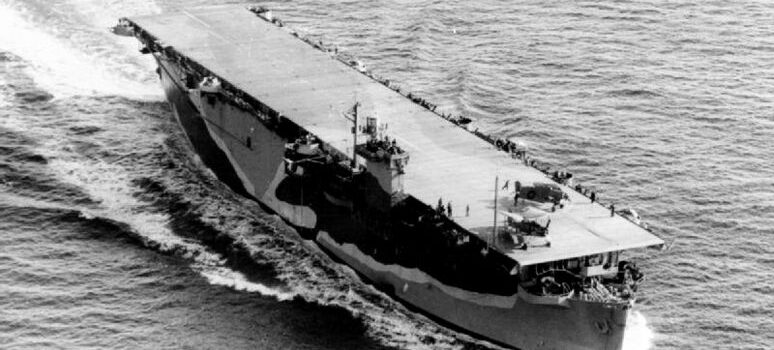
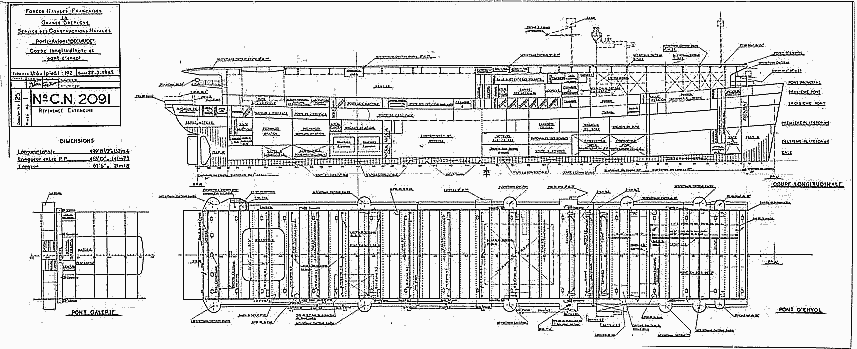
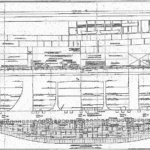
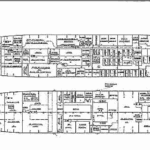
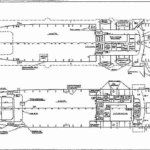
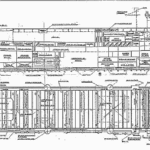
 Latest Facebook Entry -
Latest Facebook Entry -  X(Tweeter) Naval Encyclopedia's deck archive
X(Tweeter) Naval Encyclopedia's deck archive Instagram (@navalencyc)
Instagram (@navalencyc)





 French Navy
French Navy Royal Navy
Royal Navy Russian Navy
Russian Navy Armada Espanola
Armada Espanola Austrian Navy
Austrian Navy K.u.K. Kriegsmarine
K.u.K. Kriegsmarine Dansk Marine
Dansk Marine Nautiko Hellenon
Nautiko Hellenon Koninklije Marine 1870
Koninklije Marine 1870 Marinha do Brasil
Marinha do Brasil Osmanlı Donanması
Osmanlı Donanması Marina Do Peru
Marina Do Peru Marinha do Portugal
Marinha do Portugal Regia Marina 1870
Regia Marina 1870 Nihhon Kaigun 1870
Nihhon Kaigun 1870 Preußische Marine 1870
Preußische Marine 1870 Russkiy Flot 1870
Russkiy Flot 1870 Svenska marinen
Svenska marinen Søværnet
Søværnet Union Navy
Union Navy Confederate Navy
Confederate Navy Armada de Argentina
Armada de Argentina Imperial Chinese Navy
Imperial Chinese Navy Marinha do Portugal
Marinha do Portugal Mexico
Mexico Kaiserliche Marine
Kaiserliche Marine 1898 US Navy
1898 US Navy Sovietskiy Flot
Sovietskiy Flot Royal Canadian Navy
Royal Canadian Navy Royal Australian Navy
Royal Australian Navy RNZN Fleet
RNZN Fleet Chinese Navy 1937
Chinese Navy 1937 Kriegsmarine
Kriegsmarine Chilean Navy
Chilean Navy Danish Navy
Danish Navy Finnish Navy
Finnish Navy Hellenic Navy
Hellenic Navy Polish Navy
Polish Navy Romanian Navy
Romanian Navy Turkish Navy
Turkish Navy Royal Yugoslav Navy
Royal Yugoslav Navy Royal Thai Navy
Royal Thai Navy Minor Navies
Minor Navies Albania
Albania Austria
Austria Belgium
Belgium Columbia
Columbia Costa Rica
Costa Rica Cuba
Cuba Czechoslovakia
Czechoslovakia Dominican Republic
Dominican Republic Haiti
Haiti Hungary
Hungary Honduras
Honduras Estonia
Estonia Iceland
Iceland Eire
Eire Equador
Equador Iran
Iran Iraq
Iraq Latvia
Latvia Liberia
Liberia Lithuania
Lithuania Mandchukuo
Mandchukuo Morocco
Morocco Nicaragua
Nicaragua Persia
Persia San Salvador
San Salvador Sarawak
Sarawak Uruguay
Uruguay Venezuela
Venezuela Zanzibar
Zanzibar Warsaw Pact Navies
Warsaw Pact Navies Bulgaria
Bulgaria Hungary
Hungary

 Bundesmarine
Bundesmarine Dutch Navy
Dutch Navy Hellenic Navy
Hellenic Navy Marina Militare
Marina Militare Yugoslav Navy
Yugoslav Navy Chinese Navy
Chinese Navy Indian Navy
Indian Navy Indonesian Navy
Indonesian Navy JMSDF
JMSDF North Korean Navy
North Korean Navy Pakistani Navy
Pakistani Navy Philippines Navy
Philippines Navy ROKN
ROKN Rep. of Singapore Navy
Rep. of Singapore Navy Taiwanese Navy
Taiwanese Navy IDF Navy
IDF Navy Saudi Navy
Saudi Navy Royal New Zealand Navy
Royal New Zealand Navy Egyptian Navy
Egyptian Navy South African Navy
South African Navy






























 Ukrainian Navy
Ukrainian Navy dbodesign
dbodesign